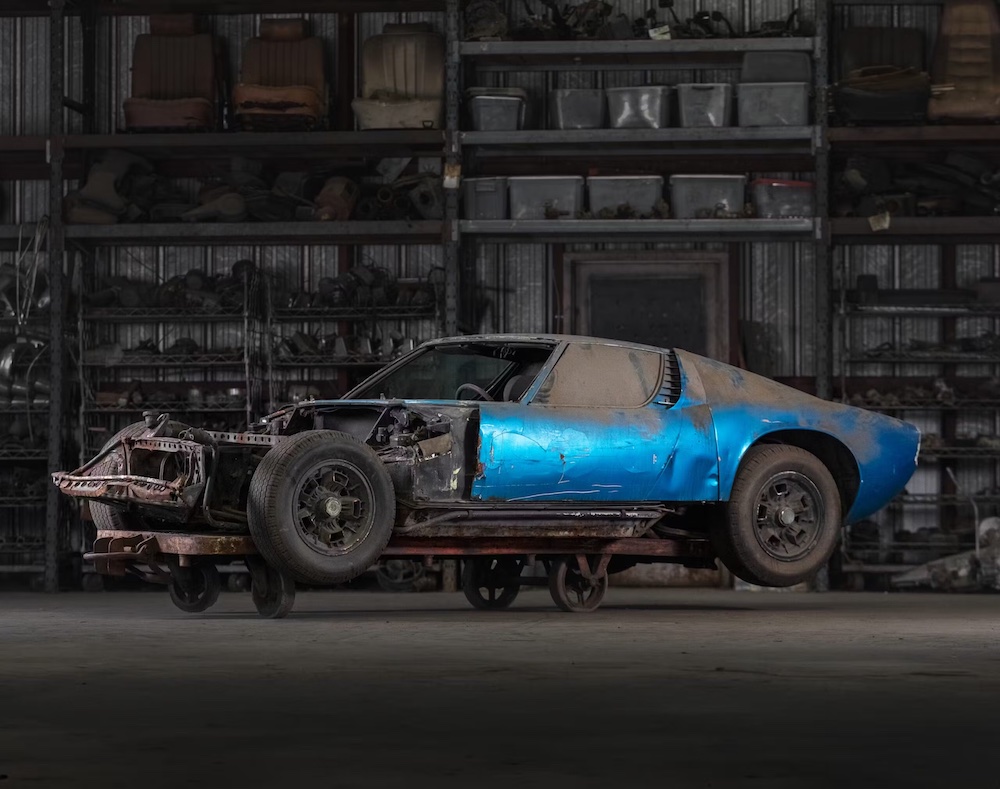A lot of ink has been spilled about so-called “barn finds” and unrestored “survivor cars.” So much ink in fact, that I’m almost wary of one more article. Almost. Barn finds, and their sometimes wacky sale prices, are something I deal with and get asked about as an appraiser on a regular basis. So, here we are again.

With the recent RM Sotheby’s “Junkyard” sale (yes, it was honestly called just that, and props to the auction company for not trying to sugar-coat the facts) of the late Rudi Klein’s, well, junkyard, conversations about barn finds have been buzzing. The usual questions about them have come up again. Especially this one: Why do cars in need of full (and in some case more than full) restorations sometimes sell for much more than similar cars that are complete, look good, run, drive, and don’t have a 40-year collection of mouse poop in them? This dynamic certainly played out many times at the Rudi Klein junkyard sale, and even after those expensive auction prices, plenty of these buyers will be keeping their restorers in new full-zoot Silverados and Hawaii vacations for years to come. And believe it or not, that’s OK.

For those of us who have been appraising for a few dozen or more years, the phenomenon of survivor cars and barn finds has been a game changer. Think about this: As the collector car world has been adopting many of the sensibilities and language of the fine arts world, barn finds fly in the face of the “rules” of fine arts. Generally, the ranking of top car values goes this way: Excellent-condition, survivor cars are followed in value by the excellently restored examples. So how can barn finds, which are generally in far more deteriorated condition than an honest and usable survivor, sell for more than any of them in some cases?
To put this in perspective, let’s say we are valuing some works in the world of fine arts. You have two similarly sized paintings, both by Monet. They are of the same bucolic scene, likely painted in the same week, both signed by the artist. They have the same provenance, owned by the same family for just over 100 years. But one no longer has its original frame, was involved in a fire, and the painting is split in the middle by an ax used in putting out the fire. Which one is worth more? Logic would dictate that the undisturbed example is worth substantially more. Right now, with classic cars, this scenario is currently (but I would argue not permanently) turned on its head.

It’s important to keep in mind that in the classic car world, there is a distinct difference between a “survivor” and a “barn find.” A car can be both a barn find and a survivor, but few are. Let’s define the differences.
Survivor cars are well-preserved vehicles that are, in a sense, historical artifacts. Their preservation is impressive and their originality is both rare and impossible to replicate, so they are highly desirable. They retain most of their original surfaces. These surfaces include paint, chrome, exterior trim, glass, seats, fabrics, carpets, gauges, headliner, and interior trim. A survivor should retain its original engine, transmission, rear end, drivetrain, wheels, and frame or chassis. Wear parts are generally excluded in defining a survivor. Wear parts include the battery, tires, wiper blades, exhaust, brake pads or linings, filters, and other miscellaneous bits. In short, most of the physical parts and surfaces of a survivor car will be the same ones it had when it first left the factory.
This is where things get complicated with survivor cars, though. On the mostly cosmetic side, what about repair damage? A repaint done when a 70-year-old car was just 5 years old? How about replacement vinyl or leather? Carpets? Added equipment after the car left the factory, such as air conditioning in 1950-70s cars? On the mechanical side, questions can arise when a transmission was replaced, but how about an alternator?

Barn finds are the easier of the two to define, because their definition isn’t as strict. I have seen cars described as barn finds that are everywhere from weak parts cars all the way up to untouched and unspoiled cars that went right into the (mythical) barn (often a garage or warehouse) with 200 miles on them. The latter are full on survivors, too. The former are just barn finds, which can also include wrecks or cars that were in a fire, a flood, or some other disaster. Occasionally they are just parts of cars that are missing major components.
Like a survivor, these more deteriorated barn finds have unrepeatable originality. The difference is that they will need significant (and expensive) restorative work before they ever get on the road again. It’s a bit irrational, then, for such cars to bring top-dollar prices at auction. But there is a sort of just-discovered or buried treasure mystique to barn finds that excites the imagination. For the owner or restorer, barn finds can also represent a sort of blank slate, an opportunity to change or personalize a car in ways that would be a bit gauche on a cleaner example, and downright frowned upon on a survivor car. There’s no exact science to any of the variables that go into barn finds or their appeal, and the bidders in an auction always have different tastes and motivations from one sale to the next. Some barn finds bring huge money. Some don’t.

Regardless of people’s reasons for paying top dollar for a barn find, one of the things I often have to remind myself as an appraiser is that people don’t always act in their own best interests (well, at least what I perceive to be in their own best interest, anyway). And you know what, that’s fine. People are allowed to do whatever they want with their money, and it is clearly not the appraiser’s job to let their own feelings get in the way of rendering an opinion of value. That value opinion must be, for a market appraisal, based on examples that have been offered, or previously been offered in the marketplace.
Appraisers don’t make values; we report values as we find them in the marketplace. As of right now, there are still huge barn find sales that defy logic. As to how long we will see their prices encroaching on or even eclipsing the top values, let’s just hang on for the ride.

Report by Dave Kinney for hagerty.com










